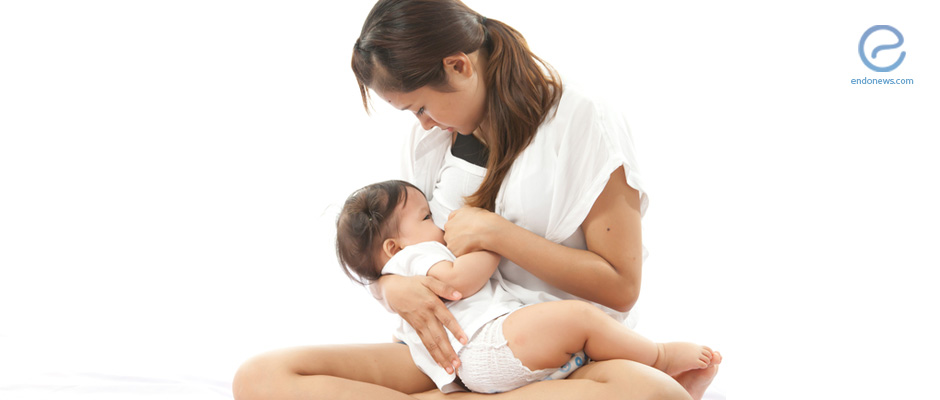Breast Feeding Can Reduce the Risk of Endometriosis
Sep 4, 2017
Research shows that breast feeding can decrease an individual's risk of endometriosis through a variety of mechanisms including postpartum amenorrhea.
Key Points
Highlights:
- This study looks at the impact total and exclusive breast feeding has on the risk of endometriosis. The researchers also consider the effect of postpartum amenorrhea on the relationship between breast feeding and endometriosis risk.
Importance:
- Endometriosis is a painful and incurable disease thus it is essential that researchers find anything that can mitigate the risk for the disease.
- While there are a few studies that look at the relationship between breast feeding and the risk of endometriosis, none of them delve into the matter as efficiently and wholly as this one.
What’s done here?
- This prospective cohort study is called the Nurses' Health Study II. The Nurses' Health Study II consisted of 116,430 registered nurses who fill out an initial questionnaire in 1989 and then follow-up questionnaires every two years. For this part of the study, there were 72,394 participants.
- For this particular part of the survey, women were asked to report the total length of breast feeding, exclusive duration of lactation, and postpartum amenorrhea.
- The outcome variable for this part of the study was laparoscopically confirmed endometriosis.
- Statistical analysis of the data consisted of using multivariable Cox proportional hazard models to evaluate 95% confidence intervals and hazard ratios. The researchers also conducted sensitivity analyses.
Key results:
- Increased length of total and exclusive breastfeeding correlated with decreased risk of endometriosis.
- For every additional three months of total breast feeding, an individual’s risk of endometriosis reduced by 8%.
- For every additional three months of exclusive breast feeding, an individual’s risk of endometriosis reduced by 14%.
- Compared to women who have never breast fed, women who breast feed a total of 36 months or more in their life reduce their risk of endometriosis by 40%.
- Giving birth in the last five years was the strongest protective association when it came to breast feeding and the risk of endometriosis.
- Postpartum amenorrhea only partially impacted the relationship between endometriosis and breast feeding.
Limitations of the study:
- The study participants were all nurses. It can be assumed that someone working in the health care field, would take better care of their body when compared to the average person.
- The authors state that the participants could have misclassified their history of breast feeding.
- The results of this study may also not apply to women with endometriosis pre-pregnancy as well as to women with more than one child in pregnancy.
- The researchers note that there may be a diagnostic delay as the participants may be asymptotic or had not been diagnosed at the time of the study.
- An analytical question is the presence of endometriosis before pregnancy, and it should be the symptoms that decreased after breastfeeding, not the disease. Furthermore, if the patients had severe endometriosis, again there expected to be fertility problems as well.
Lay Summary
In their publication titled “History of breast feeding and risk of incident endometriosis: prospective cohort study,” Farland et al. examine the benefits of breast feeding. The authors initially hypothesize that the length of lactation in women that have been pregnant relates to that individual’s risk of endometriosis. Additionally, they presume that the most influential factors in the relationship above between endometriosis risk and breast feeding are the length of exclusive breast feeding, defined as breast feeding before the start of solid food/formula, and postpartum amenorrhea, missed periods. Their study and its results are published in The BMJ.
This prospective cohort study consisted of 72,394 participants, and 3296 of these participants had endometriosis. All the women in the study had one or more pregnancies that were six months or longer. The members were also responsible for reporting the length of total and exclusive breast feeding as well as the duration of post-partum amenorrhea. This information was analyzed alongside the incidence of self-reported and laparoscopically confirmed endometriosis.
The results show that increased length of total and exclusive breast feeding correlated with decreased risk of endometriosis. Furthermore, the risk of endometriosis was also reduced due to breast feeding if the woman in question gave birth in the last five years. Additionally, it was deduced that postpartum amenorrhea only played a partial role in reducing the risk of endometriosis through breast feeding.
Research Source: https://www.ncbi.nlm.nih.gov/pubmed/28851765
breast feeding postpartum amenorrhea breast

